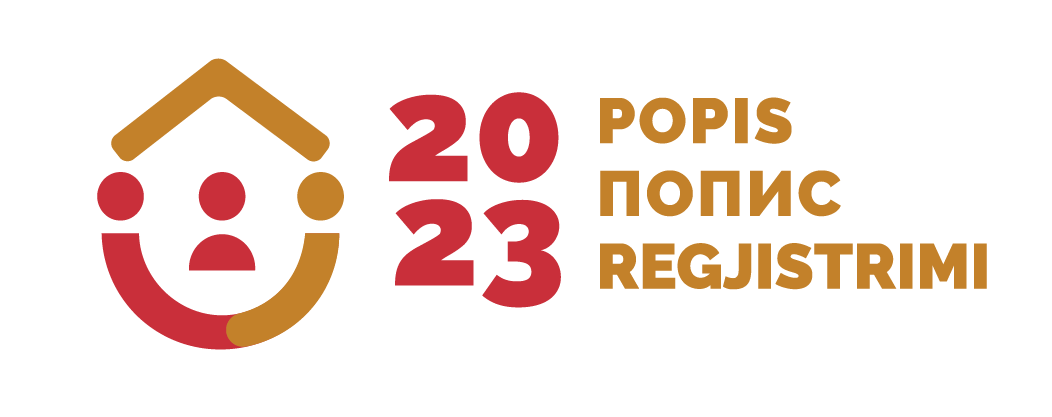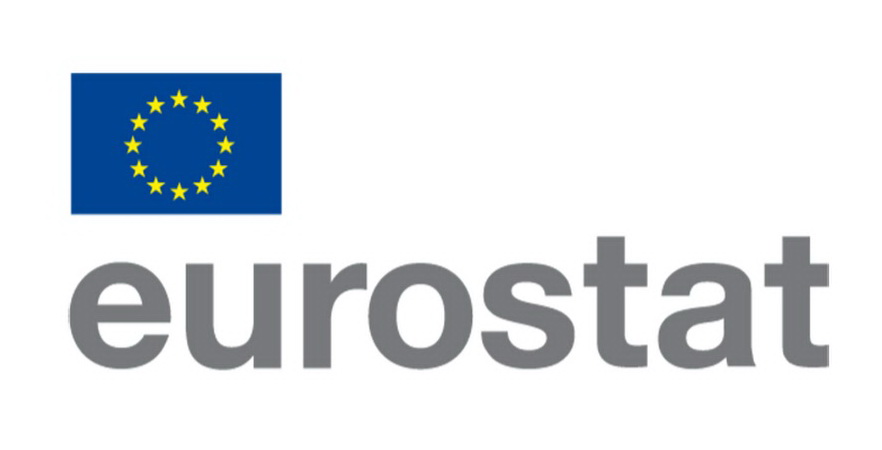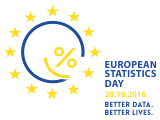| Category: |
Economic statistics |
| Area: |
Investments |
| Survey / data collection: |
Investments in fixed capital |
Note: For any question on metadata, please contact MONSTAT metadata support.
| 1. Contact Vrh |
| 1.1. Contact organization: |
Statistical Office of Montenegro - MONSTAT |
| 1.2. Contact organization unit: |
Department for short-term indicators |
| 1.2. Contact organization unit: |
IV Proleterske 2, 81000 Podgorica, Montenegro |
| 2. Metadata update Top |
| 2.1. Metadata last certified: | 16 November 2023 |
| 2.2. Metadata last posted: | 29 December 2023 |
| 2.3. Metadata last update: | 16 November 2023 |
| 3. Statistical presentation Top |
| 3.1. Data description: | The aim of this survey is, except informing on investment activity in the country, to enable the calculation of GDP by expenditure approach, determine the share of gross investment in GDP. Investments in fixed assets are considered to be provisions of business entities to obtain new fixed assets and increase the value or the replacement of existing fixed assets. |
| 3.2. Classification system: | NACE Rev. 2 |
| 3.3. Sector coverage: | Units of observation are all business entities in Montenegro that are direct investors (whether they are in regular or probationary work, in setting up or in liquidation) which are registered in sectors from A to S, according to the classification NACE Rev. 2. |
3.4. Statistical concepts and
definitions: | Realized investments represent the value of effectively carried out construction, construction or procurement of facilities, equipment and others, regardless of whether they are finished whether their payment has been made (without the revaluation of realized investments).
Payment for invitations is a cash investment in fixed assets during the year in which payments are actually made, regardless of the moment of construction or acquisition of fixed assets.
Realized investments in new fixed assets relate to the purchase of investment goods that have not yet been the subject of purchase of sales between the direct users of these goods (purchase made directly from the contractor of construction works, equipment manufacturers or fixed assets produced in their own direction. The purchased equipment and equipment is purchased abroad, investments in significant improvements to existing fixed assets, investments in significant land improvements and land transfer costs.
The construction of new capacities includes investments in new fixed assets in a new or old location, regardless of the activity for which these investments are intended. The new facilities include: the facility as an economic-technical unit, part of the construction of a facility that represents a separate economic and technical unit, a continuation of construction or equipment suspended investments, investments in cultivated biological resources, construction of new roads, procurement of new machines and equipment and other categories of new fixed assets. |
| 3.5. Statistical unit: | Reporting units are the business entities in the country that are direct investors, regardless of whether they are in a regular or probable operation in the establishment or liquidation of a natural person. |
| 3.6. Statistical population: | Data on realized and paid investments from legal entities in the country if they are direct investors. |
| 3.7. Reference area: | Montenegro |
| 3.8. Time coverage: | Data on investments in Montenegro are calculated from 1966. Data are available on the website 2002 - 2022. |
| 3.9. Base period: | Previous year |
| 6. Institutional mandate Top |
6.1. Legal acts and other
agreements: | The Law on Official Statistics and Official Statistical System (Official Gazette of Montenegro No 18/12 and 47/19) defines provisions for collection, processing, and dissemination of data. The Law provides to the Statistical Office legal powers to collect and access the data necessary for the implementation of Programme and Annual Plan. The Law gives a priority to the use of administrative data and right of access to individual data that are a result of survey of other official statistical producers. As an annex to legal provisions, Statistical Office has signed several memoranda on cooperation with administrative data providers. |
| 6.2. Data sharing: | Signed agreement on cooperation with the official statistical producers:
1. Revenue and customs Administration
2. Ministry of Finance
3. Central Bank of Montenegro
4. Trilateral agreement (MONSTAT, Ministry of Finance, and Central Bank of Montenegro)
International institutions:
1. EUROSTAT
2. UN organizations
3. IMF
4. World Bank |
| 7. Confidentiality Top |
| 7.1. Confidentiality - policy: | Articles 53-60 of the Law on Official Statistics and Official Statistical System (Official Gazette of Montenegro No 18/12 and 47/19) provide a framework for protection, use, and transmission of confidential data. MONSTAT has produced two comprehensive rulebooks that cover the procedures for individual data protection as well as keeping individual records. With purpose of the meeting legal framework on functioning of security system and statistical confidentiality there was adopted the Rulebook on Keeping Statistical Data by which Manner, Time, Technical Conditions and Organization of Statistical Data Storage to Prevent Their Destroying, Misappropriation, and Unauthorized Use is Regulated as well as the Rulebook on Contents and Manner of Keeping Records on Users of Individual Statistical Data by which contents and manner of keeping records on users of individual statistical data is regular.
Pursuant to the Article 59, an access to the confidential data is limited to persons performing duties and tasks of official statistical producer and up to the stage the data are necessary for official statistical production. Persons that performs duties and tasks within official statistical producers must sign the statement on respecting the principle of confidentiality.
Law on Official Statistics and Official Statistical System is aligned with the Regulation No 223/2009 and the Regulation (EU) 2015/759 from 29 April 2015 that also regulate confidentiality provisions.
The Government of Montenegro adopted the Statement on Commitment of Confidence in Official Statistics (Commitment of Confidence). |
7.2. Confidentiality - data
treatment: | Statistical Office staff members sign confidentiality statement on respecting data confidentiality, and for any deliberate violation of statistical data confidentiality, important legal measures are envisaged. Article 54 of the Law on Official Statistics and Official Statistical System of Montenegro (Official Gazette of the Republic of Montenegro No 18/12, 47/19) regulates that data collected, processed, and stored for purpose of official statistics shall be considered confidential if they allow reporting units to be identified, either directly or indirectly, thereby disclosing individual information. The reporting unit directly identified means the identification of a reporting unit from its name or address, or from assigned identification number. Indirect identification means the identification of a reporting unit by the deduction, having into account all measures to identify a reporting unit. Data for the use of which reporting units gave explicit approval shall not be considered confidential. |
| 8. Release policy Top |
| 8.1. Release calendar: | The Law on Official Statistics and Official Statistical System (Official Gazette of Montenegro No 18/12 and 47/19) stipulates that official statistical producers prepare, update, and publish Statistical Release Calendar. It is published on the website of Statistical Office not later than 20 December for the next year, for all official statistical producers that includes date of releasing statistical data. Any change in date of releasing in the Calendar is published in advance in accordance with the Procedure on Unplanned Revisions. |
| 8.2. Release calendar - access: | https://monstat.org/uploads/files/O%20NAMA/Kalendar2022_eng.pdf |
| 8.3. User access: | General aim of official statistical producer is to meet the needs of users, and to make an access to statistical data to users in an understandable manner, simultaneously and under the same conditions. Statistical Office is obliged to produce and disseminate official statistics in objective, transparent and professional manner, so that all users are equally treated. |
| 10. Accessibility and clarity Top |
| 10.1. News release: | Release of Investments in fixed assets is available on:
https://www.monstat.org/eng/page.php?id=511&pageid=94 |
| 10.2. Publications: | Statistical Office publishes the following regular publications: 1. Statistical Yearbook, 2. Montenegro in figures, 3. Monthly statistical review. In addition to the above regular ones, Statistical Office publishes also additionally publications. Some of the most important additional publications are as it follows: 1. Women and Men in Montenegro, 2. The most often used statistical data All publication published by Statistical Office are available at the following link: http://monstat.org/eng/publikacije.php |
| 10.3. Online database: | http://monstat.org/eng/pxweb.php |
| 10.4. Micro-data access: | The Law on Official Statistics and Official Statistical System (Official Gazette of Montenegro No 18/12 and 47/19) regulates rules under which external users can obtain an access to individual data for needs of research. Article 58 defines types of scientific and research organizations that can obtain such data. Providing individual data without identifier is possible only upon a written request of scientific and research institutions, with purpose of performing scientific and research activities as well as international statistical organizations and statistical producers from other countries.
Research entity signs the agreement with Statistical Office, and it signs the statement on respecting the confidentiality principle.
Official statistical producers keeps a separate records on users and purpose of using the statistical data given to these users. |
| 10.5. Other: | Not relevant. |
10.6. Documentation on methodology:
domain: | Methodological basis for this survey is available on web site: https://www.monstat.org/uploads/files/investicije/Methodology_Survey%20on%20investments%20in%20fixed%20assets_2020.pdf |
| 10.7. Quality documentation: | The Law on Official Statistics and the Official Statistical System ("Official Gazette of Montenegro" No. 18/12 and 47/19) defines the commitment to quality, which ensures that producers of official statistics in Montenegro work and cooperate in accordance with international principles of quality of the statistical system.
In accordance with the ESS Quality Declaration, Article 338 of the Treaty on the Functioning of the EU, Regulations 759/2015 and 223/2009 and the European Statistics Code of Practice, the following documents are adopted:
1. Quality Strategy of the Statistical Office
2. Guide for the implementation of the Quality Strategy in the Statistical Office;
3. Implementation plan |
| 11. Quality management Top |
| 11.1. Quality assurance: | Statistical Office has chosen the implementation of elements of TQM (Total Quality Management) model that foster development and improvement of functioning of:
- Institution,
- Official statistical result production, and
- Individual.
Within middle-term deadline, Statistical Office has chosen the TQM implementation through the following objectives:
1. Strong commitment to users and other interested parties,
2. Quality statistical processes and products,
3. Professional orientation of staff members,
4. Constant improvements,
5. Reduction of overburden of reporting units. |
| 11.2. Quality assesment: | The obligation to submit a questionnaire is based on the Law on Official Statistics and the System of Official Statistics referred to in Articles 28 to 30. Data quality is based on quality standards criteria: the significance of statistical data, accuracy and reliability, timely disclosure of data, comparability of data, data compliance. |
| 12. Relevance Top |
| 12.1. User needs: | International users:
- UN organization
- international institute
National users:
- Ministries and other public administration bodies,
-Local government, and
-Other local government bodies.
- Central bank,
- Non-governmental organizations,
- Students,
-Researchers,
- Media. |
| 12.2. User satisfaction: | The Statistical Office has adopted the Quality Management Strategy, the Guidebook to the Implementation of the Quality Management Strategy, as well as the Plan for the Implementation of the Quality Policy.
In order to measure the degree to which fulfills obligations towards users and within the new quality policy, the Statistical Office conducted User satisfaction survey.
The results of the survey are available on the Statistical Office website, link: https://www.monstat.org/uploads/files/kvalitet/2.%20Izvjestaj%20o%20zadovoljstvu%20korisnika%20-%202022_FINAL%20engleska.pdf |
| 12.3. Completeness: | The research is in accordance with national requirements. |
| 13. Accuracy and reliability Top |
| 13.1. Overall accuracy: | The survey is based on the reporting method. Data are collected from large and medium-sized legal entities (all legal entities are included), while small ones are selected according to the stratified sample and the stratification is done according to the Classification NACE Rev2 and by the number of employees. The data obtained is subject to the common types of errors associated with sampling error, error in coverage, measurement, processing, and inaccessible. |
| 13.2. Sampling error: | Since the survey does not include all units of a target population but rather a randomly selected sample of units, there are sample errors that may occur in estimations. A variation coefficient is a relative measure (percentage) of the accuracy of an estimate. Along with these measures, a lower and upper limit of a confidence interval is calculated. |
| 13.3. Non-sampling error: | Non-sampling errors are tied to other errors that are not related to the sample. Non-sampling errors include: Coverage errors, Measurement errors, Processing errors and Non-response errors . |
| 14. Timeliness and punctuality Top |
| 14.1. Timeliness: | The data are published 102 days after the end of the reference period. |
| 14.2. Punctuality: | Accuracy indicator represents the time difference between Actual date of the effective provision of the statistics and Scheduled date of the effective provision of the statistics.
P3 = dact - dsch
In investmentin survey for 2022 year, punctuality = 0, which means that we have met the calendar: not earlier and not later published. |
| 15. Coherence and Comparability Top |
15.1. Comparability -
geographical: | The methodology is comparable to international statistical standards, ie, with the European System of Accounts (ESA2010) and the National Accounts System (SNA2008). |
| 15.2. Comparability over time: | Data are available from 2009 according to the Classification of Activities of NACE Rev. 2. 2 at the sector level. |
15.3. Coherence - cross
domain: | The questionnaire is harmonized with international statistical standards and methodology, with the European System of National Accounts (ESA95) and the National Accounts System (SNA93) and revised according to the ESA 2010 classification. |
| 15.4. Coherence - internal: | Data are internal coherent. Higher level aggregations are derived from detailed indices according to well-defined procedures. |
| 17. Data revision Top |
| 17.1. Data revision - policy: | Statistical Office has adopted the revision policy and it is available on the website: http://www.monstat.org/eng/page.php?id=1411&pageid=1411 |
| 17.2. Data revision - practice: | This survey uses regular revisions. Large and unplanned audits are only used in the specific cases defined by the revision policy. |
| 18. Statistical processing Top |
| 18.1. Source data: | The survey is based on the reporting method. Data is collected on a randomly stratified sample and stratification is done according to the sectors and by the number of employees. The reporting units that have entered the sample fill in the INV-01 form from the bookkeeping, financial documentation as well as from the investment programs and technical documents. Since various sources of data are used for this report, it is necessary that related data be compared and harmonized with each other.
The source of data for individuals is administrative. |
18.2. Frequency of data
collection: | Annually. |
| 18.3. Data collection: | Data are collected through questionnaire (by post, email or fax). |
| 18.6. Adjustment: | Not relevant |







